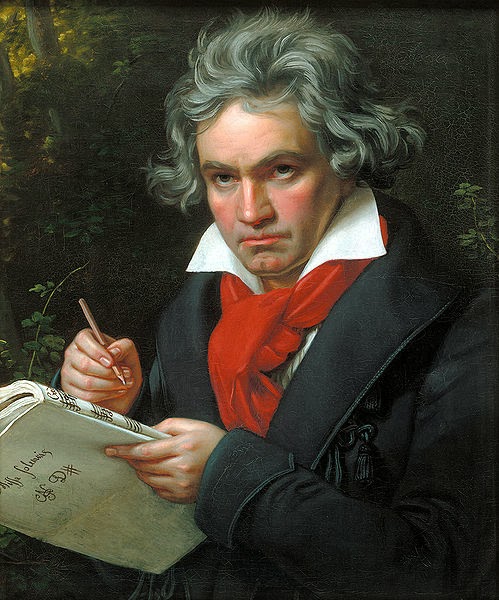Beethoven: Quatuor nº 13 (5. Cavatina)
The String Quartet No. 13 in B♭ major, op. 130, by Ludwig van Beethoven was completed in November 1825. The number traditionally assigned to it is based on the order of its publication;
it is actually the fourteenth quartet in order of composition. It was premiered in March 1826 by the Schuppanzigh Quartet and dedicated to Nikolai Galitzin on its publication in 1827. "Cavatina" means a short and simple song.
The project began in 1822 with a commission from Russian Prince Nicholas Galitzin, an amateur cellist who requested “one, two or three” string quartets. Once Beethoven began work in earnest, he turned out not one, two or three, but five massive string quartets that ultimately become six separate works known simply and profoundly as “Beethoven’s Late Quartets” in accordance with division of his artistry into three phases, early, middle and late.
For decades, these quartets were regarded by most as strange, difficult, anomalous, quite possibly the work of a once great composer now degenerated into a deafness and insanity. (Schubert, Mendelssohn and Schumann thought differently). It was not until the 20th century that the late quartets became widely regarded as profound and transcendent masterworks worthy of entering and if not becoming the apex of the traditional repertoire.
Beethoven saved his most startling innovations for last. The final Galitzin quartet, # 13 in B-flat Major, Op. 130, wrenches a listener amid sharply differentiated moods.
The exquisitely heartfelt cavatina, blends the rich instrumental lines with patient evolution; reportedly, Beethoven would weep just thinking about it and said nothing he had written so moved him. The cavatina ends on a lingering wisp of serenity.
The Cavatina (as played by the Budapest String Quartet) was chosen as the last piece to be played on the "golden record", a phonograph record containing a broad sample of Earth's common sounds, languages, and music sent into outer space with the two Voyager probes.
Quartetto Italiano (English: Italian Quartet) was a string quartet founded in 1945. They made their debut in 1945 at Carpi when all four players were still in their early 20's. They were originally named Nuovo Quartetto Italiano before dropping the "Nuovo" tag in 1951. They are particularly noted for their recording of the complete cycle of Beethoven string quartets, made between 1967 and 1975.

Beethoven - Quatuor nº 13 in B Flat Op. 130 -
(5. Cavatina: Adagio Molto Expressivo) -
Quartetto Italiano
